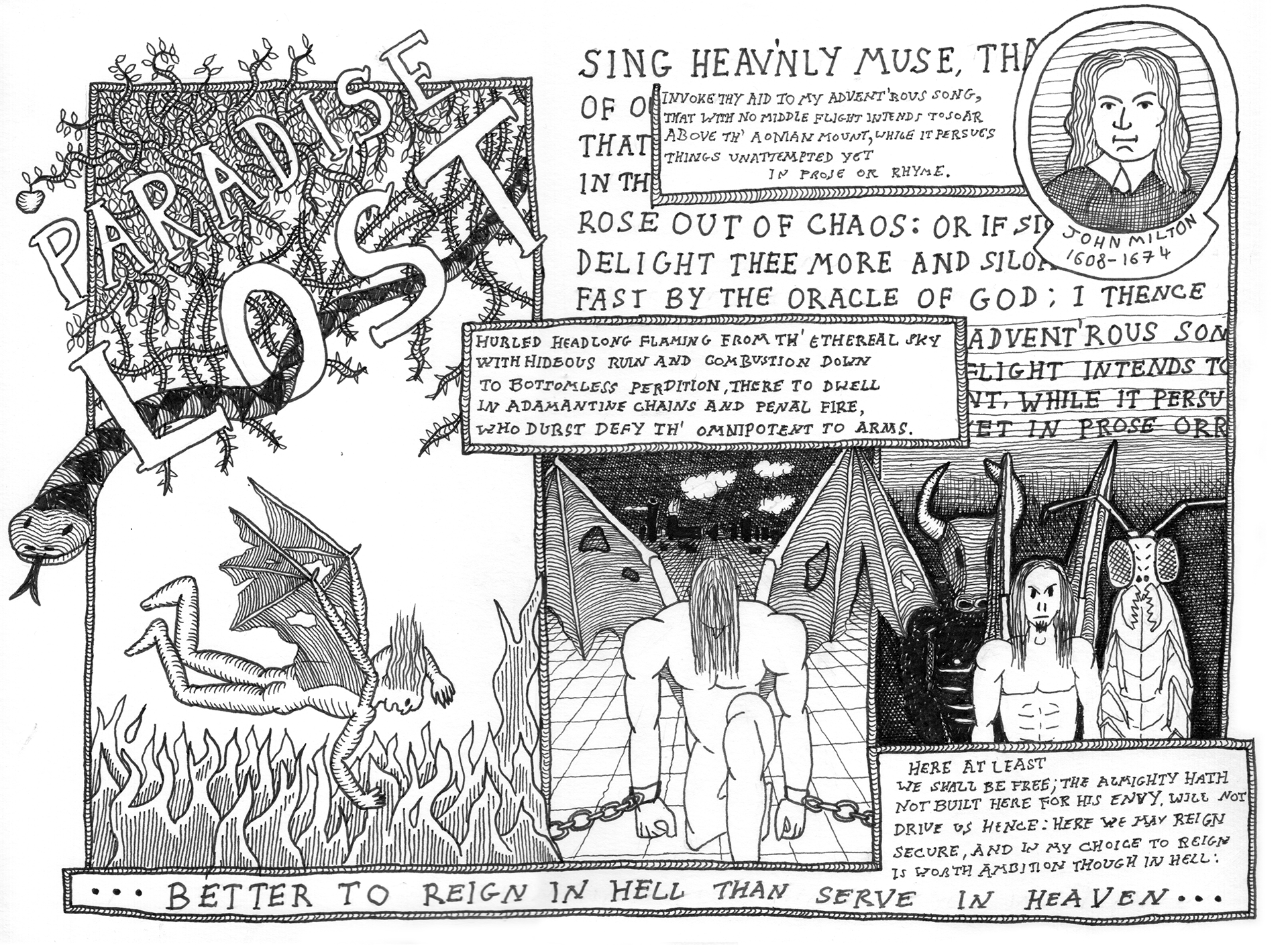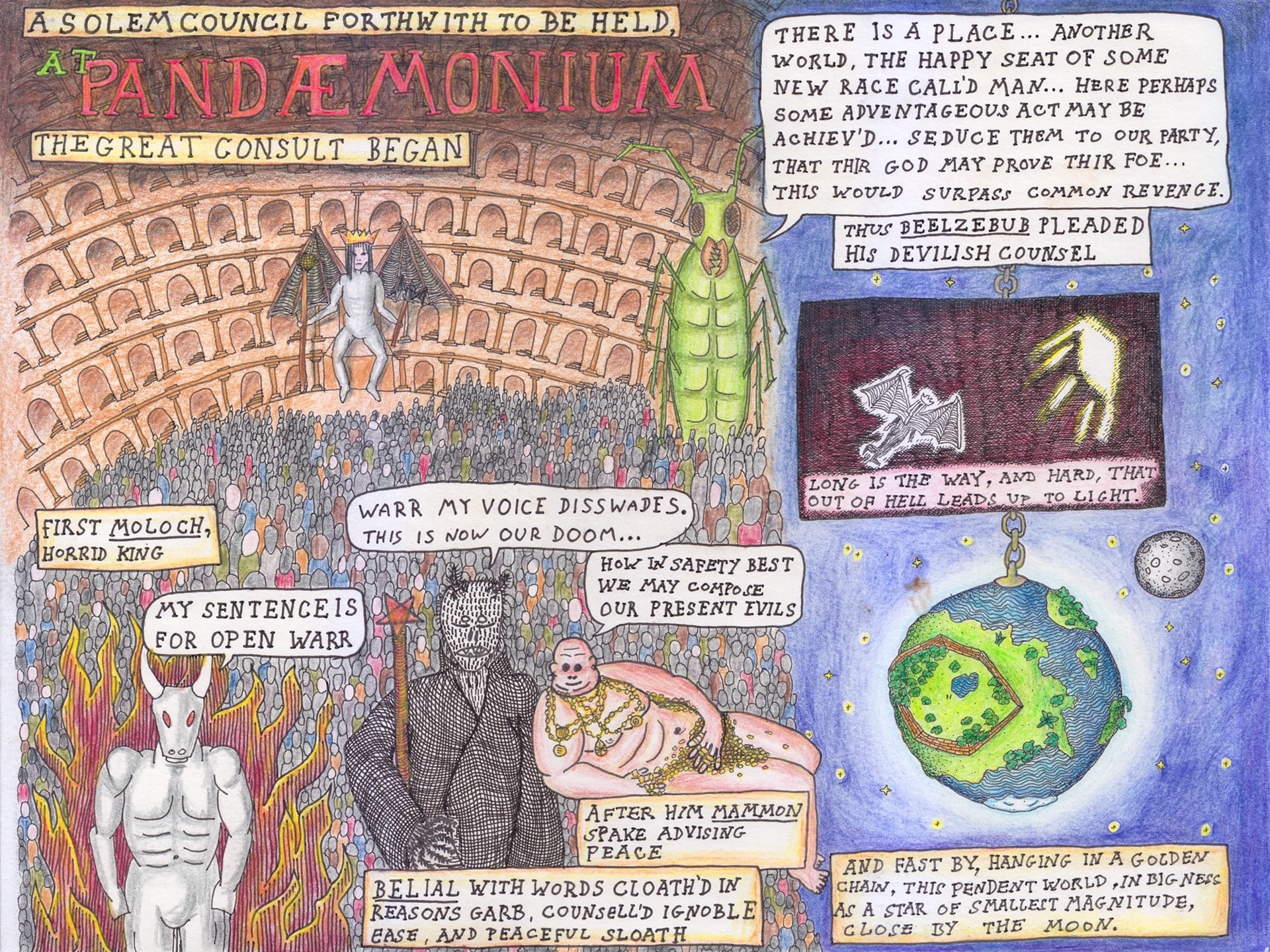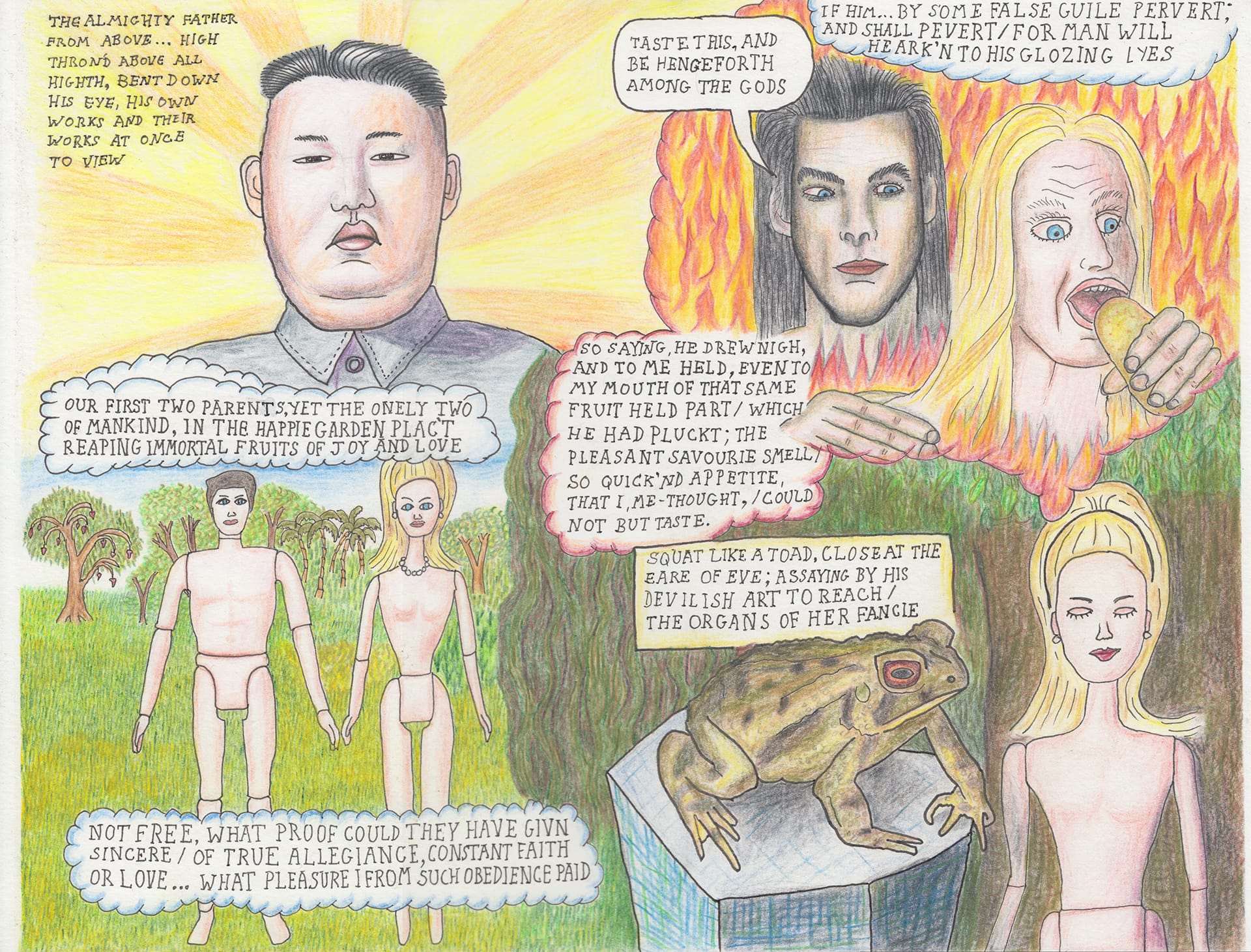Paradise Lost cartoons
A few years ago I got a bit obsessed by Paradise Lost. Paradise Lost is a difficult work to read. It starts like this:

This was my attempt to write in an antique book typeface, varying the width of the line using the pressure sensitivity of the Apple Pencil. Very difficult to do (as you can see). I’ve since given up trying to write text with an Apple Pencil, old-school pen and paper is a much more satisfying experience for that.
1 There is a BBC radio play called Paradise Lost with Milton (played by Ian McKellen) dictating to and discussing the play with his wife (played by Frances Barber). It’s available as an audiobook. Here’s McKellen talking about it.
It’s a poem that takes a lot of study to understand. That’s part of why I like it, it’s like a puzzle. It’s also a kind of encyclopedia of thought and knowledge in the 17th Century. John Milton (1608–1674) was an extremely well educated and widely read man. Apparently he wrote it when he was blind, devising the poem in his bed and then dictating the lines to his wife for her to write down1.
As I have said before2, I really enjoy explaining things. So of course Paradise Lost represents a special challenge, as it is so difficult to understand. I decided I would try to make a visual explanation, using what I consider to be key extracts from the poem along with my own illustrations.
Paradise Lost is made up of ten books, but the first three are the most interesting to me. They retell the story of the war between the fallen angel Satan and God, and then the story of Adam and Eve in Eden. Originally I intended to do it in black and white. Here my interpretation of the first book in a single page:

I drew this on my half-hour daily commute, taking a lightweight drawing board with a piece of watercolour paper taped to it on the train every day.
Of course having drawn it, the temptation to colour it in was too great. Here’s the colour version:

Colouring with pencil like this takes a lot of time. If I were to do this again (and I might!) I would scan the B&W line drawing and then colour on the iPad.
Below is my visual summary of Book Two of Paradise Lost. The word “Pandemonium” was invented by Milton3. Milton coined a lot of new words, more than Shakespeare, including lovelorn, unoriginal, earthshaking, space (as in “outer space”), enjoyable, fragrance, sensuous, debauchery and terrific.

One of the really interesting things about Paradise Lost is the character of Satan. Satan has all the best arguments, and Milton’s God comes across as a bit of a jerk. Some people say that Milton deliberately wrote it like this because Satan would test people’s faith. William Blake thought Milton was “a true Poet and of the Devil’s party without knowing it.”4
4 Blake wrote this in The Marriage of Heaven and Hell. More details from The British Library.
But Milton’s Satan became the devil character we know today and that has appeared in so many books and movies. By far my favorite example, and a wonderful acting performance, is Al Pacino in the 1997 film The Devil’s Advocate5. Pacino plays a character called John Milton, and this wonderful scene is a good demonstration of the appeal of Milton’s Satan:
Al Pacino’s speech about God (The Devil’s Advocate)
Below is my visual explanation of the third book. It should be read in an anti-clockwise direction from the top-left. This wasn’t really intentional, and if I do this again I will change the layout a bit. But I’m quite happy with how this one turned out, and like that I started to get more creative with how I visualized the story.

I show God like Kim Jong-un because Milton’s God reminds me of this quote6 from the late (and great) Christopher Hitchens:
Religion is a totalitarian belief. It is the wish to be a slave. It is the desire that there be an unalterable, unchallengeable, tyrannical authority who can convict you of thought crime while you are asleep, who can subject you to total surveillance around the clock every waking and sleeping minute of your life, before you’re born and, even worse and where the real fun begins, after you’re dead. A celestial North Korea.
Adam and Eve are represented as Ken and Barbie because Milton’s God makes them please him by serving him (like I said, Milton’s God is a bit of a jerk). Making Adam and Eve as Ken and Barbie allows me to visually represent “The Fall” by making Eve into a real human in the top-right panel. Yes, Eve is supposed to look a bit porny here, Milton clearly alludes to there something being sexual in the act of Eve eating the forbidden fruit (“assaying by his devilish art to reach the organs of her fancie”.)
I have made Satan look like Nick Cave partly because Cave is a fan of Milton. The title of the Nick Cave & The Bad Seeds’ song Red Right Hand is a direct lift from Paradise Lost, and he refers to Milton and the poem in lyrics of other songs, such as Song of Joy:
It seems he has done many, many more,
quotes John Milton on the walls in the victim’s blood.
The police are investigating at tremendous cost.
In my house he wrote ‘his red right hand’.
That, I’m told, is from Paradise Lost.
Nick Cave & The Bad Seeds - Red Right Hand
Book Four of Paradise Lost is less interesting to me, so I stopped at Book Three. But I really enjoyed doing this, and may return to Paradise Lost again in the future.